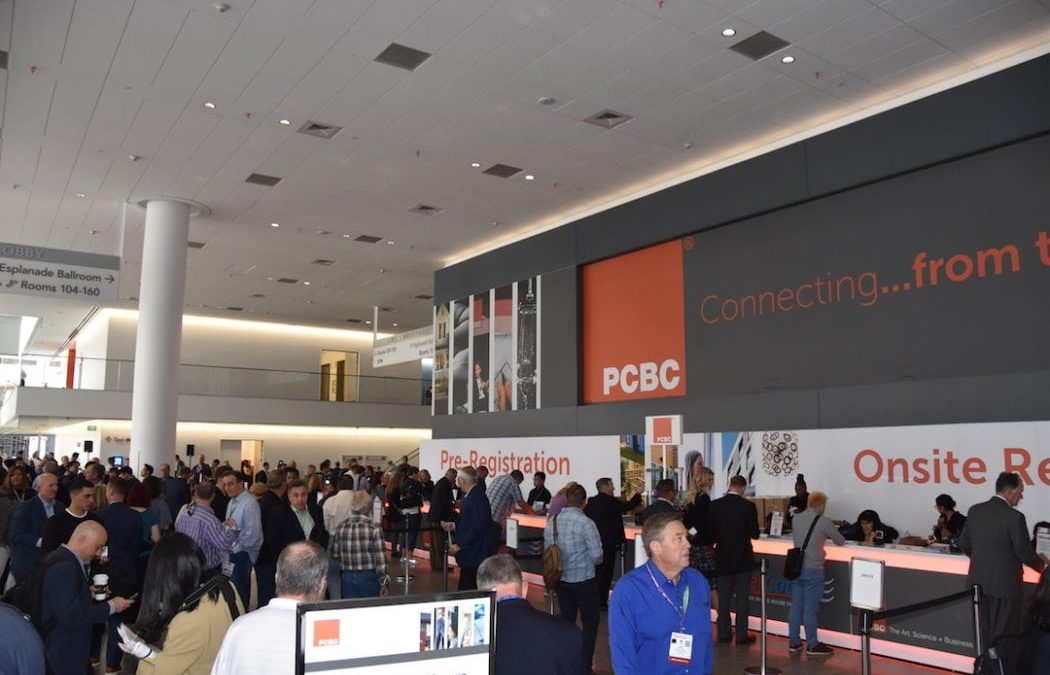From being the first state to enact legislation to eliminate lead in plumbing fixtures to setting its own standards for vehicle emissions, California is a leader when it comes to championing and implementing policies that protect both consumers and the environment. The Golden State is also known for being one of the most energy-efficient states in the country… and among the lowest in per-capita energy consumption.
The 2018 Pacific Coast Builders’ Conference, held last week in San Francisco, was a microcosm of this commitment to paying more attention to efficiency while also preserving precious resources. During the show, more than 350 exhibitors offered a closer look at what’s happening at the forefront of the building industry.
Water conservation was definitely top of mind, with companies spotlighting everything from products that provide data on water usage to low-flow faucets, toilets and showerheads, as well as on-demand water recirculation systems and gray water reclamation solutions. With an extended regional drought showing no signs of letting up anytime soon, water shortages are all too familiar in California (and too close for comfort in other U.S. regions). This makes reevaluating how we as a society utilize water a ‘consuming’ priority.

The Smart Home Water Monitor from Streamlabs delivers water usage data in real time and also alerts homeowners to possible leaks.
As expected, among the most prominent trends brands exhibited on the show floor was smart home technology, with water as a central focus. From smart home water monitors and leak detection systems to voice-controlled shower heads that enable consumers to set exact water temperature and pressure levels, it’s clear that water remains a prized commodity. Many predict global conflicts may soon be based on access to water, rather than petroleum. One thing is certain—the demand for automating and streamlining functions within the home is only going to continue to grow and an increasing number of manufacturers are prioritizing the importance. With a competitive landscape in high gear, it will be interesting to witness how far these technologies continue to evolve at next year’s conference.
One of the ‘smartest’ trends making its presence known was a focus on indoor air quality. A number of companies showcased their ventilation systems designed to keep fresh air moving throughout the home. As homes become more airtight to increase energy efficiency, the tradeoff has been unhealthy air due to reduced airflow and ventilation. According to the U.S. Environmental Protection Agency, the air inside our homes could actually be two to five times worse than the air outside—a sobering thought. As the Hollies sang, “All (you) need is the air that (you) breathe,”—and the cleaner, the better.
Green products were out in full force as well. Insulation made from recycled paper fibers, ethanol-fueled outdoor fireplaces, all-natural plaster, and bamboo-panelized wall systems were just a few of the products on display. With California’s recent mandate for solar roofing as a harbinger of more legislation to come, several companies highlighted their solar products, sharing new innovations that make energy harvesting roofs perform—and look—better than ever.

The Apollo® II Solar Roofing System from CertainTeed generates clean energy while protecting homes from water intrusion.
Solar makes a lot of sense in California, where consumers pay a premium for electricity and sunny days are the norm. An estimated 5 million homes in California are already powered by solar energy, and the California Energy Commission’s requirement that solar be installed on all new homes in the state beginning in 2020 will ramp up that figure significantly. While the return on investment varies considerably per state, solar capacity across the U.S. is expected to more than double over the next five years—good news for building product manufacturers investing in this segment.
So, what were the key takeaways at PCBC?
Eco-conscious(ness). Building products are increasingly designed with the environment in mind. Beyond regulations, a growing number of manufacturers understand—and appreciate—the need to find ways to design sustainable products that minimize environmental impact and preserve our natural resources.
Wellness. Building product manufacturers recognize the momentum of the wellness trend and many are developing products and solutions that consider the health of not only consumers, but also the building industry professionals who work with and install those products. Once an afterthought, health and wellness is now claiming the aspirational high ground over ENERGY STAR® and Indoor Air Quality (IAQ).
Intelligent design. Smart technology and automation in the building products industry is going to elevate convenience to a level beyond what was previously imagined. If something can be automated, it will be. Ingredients pulled from the refrigerator, transferred to the range, cooked to your preference and ready to eat when you arrive home from a busy day? It could happen—a “Jetsonian” world is closer than we may think.
After spending two full days on the PCBC show floor, the K&A team came home inspired by the enthusiasm and innovative spirit we encountered. Building product professionals are reimagining what’s possible—and we can’t wait to see what’s next.




